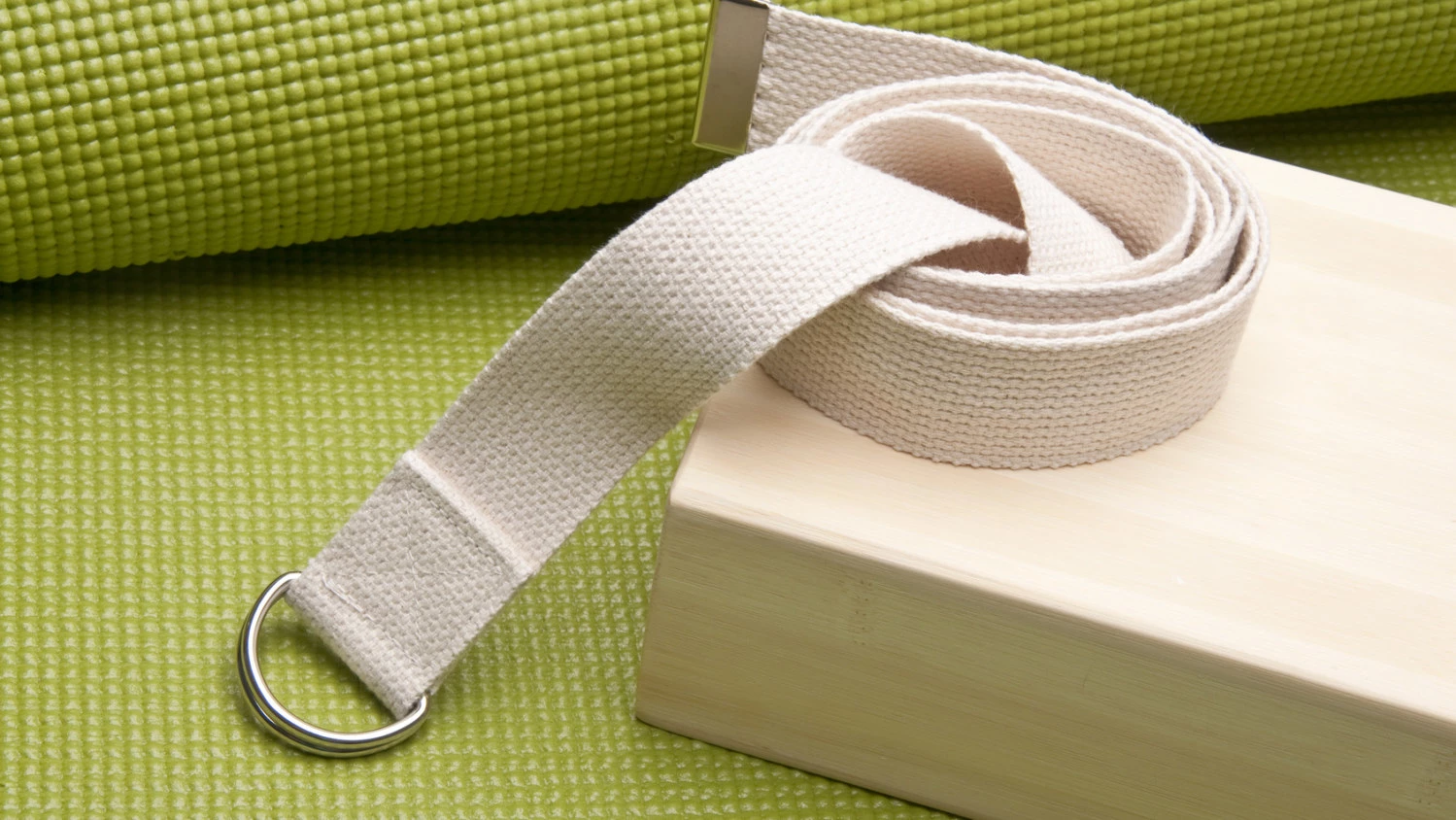Think Outside the Block: A Guide to Innovative Yoga Props

One of the beautiful things about yoga is that you need nothing but yourself to practice. It doesn’t matter where you are in the world, whether at the seashore on a vast expanse of sand or squeezed between a bed and a bureau in a tiny hotel room. All you need to bring to the practice is you: your body, your mind and your breath.
Although no fancy equipment is ever required to practice yoga, props can be incredibly useful and beneficial. When they’re available and used correctly, they support the body in ways that enhance your ability to receive benefits of each pose. The right prop can make an inaccessible pose suddenly attainable, enable you to go deeper in an asana while maintaining proper alignment, or allow you to stay in a meditation posture longer by supporting various parts of the body.
While blocks, blankets, belts and bolsters have long been standard equipment at most yoga studios, a younger generation of yoga props has emerged. Here are a few recent innovations that could empower you to experience your practice in a whole new way.
Yoga Jellies
Yoga Jellies are a unique way to provide comfort and cushioning for the body. Made of a non-toxic, latex-free silicon material, these five-and-a-half inch discs can be placed under any body part that bears weight. They create padding in poses where the knees are on the floor. They can alleviate the wrist pain so common in Downward Dog, Plank and Tabletop by lessening the flexion of the wrist. Placing them under the feet in standing poses supports the arches. Small, portable and versatile, Yoga Jellies can be taken anywhere you practice asana to create cushioning and relieve pain and discomfort.
Three Minute Egg
The Three Minute Egg gives yoga blocks a whole new edge … literally. While classic blocks are rectangular, the Egg is oval-shaped with curved edges. It can be used just like a standard block as reinforcement under the hands in standing poses. However the efficacy of the curves really emerges when the Egg is used to cradle parts of the body in seated or supine poses, as the rounder edges conform snugly to the body’s lines. The Eggs come in three densities: soft for Restorative poses, medium for all-around use, and hard for weight-bearing asanas.
BodyLift
Salamba Sirsasana (headstand) has been described as the king of the asanas. In Light on Yoga, BKS Iyengar claims that regular practice of Sirsasana “develops the body, disciplines the mind and widens the horizons of the spirit.”
Unfortunately headstand can do more harm than good if it’s practiced without proper preparation and skill. Balancing all of your weight on the top of the head without the necessary strength and correct alignment can cause neck strain, pain and over-stretching or compression of the delicate cervical vertebrae.
The BodyLift headstand inversion tool is an amazing way to experience the myriad benefits of turning the body upside down without compromising the health of the neck. It looks like a small stool with four silver legs and a molded black foam cushion, but the seat of the stool has an indentation. When performing an inversion with the BodyLift, the shoulders rest on the cushion while the neck and head slide through the indentation and dangle below the cushion. This allows for a “headstand” where the weight is borne by the shoulders, not the head.
Instead of potentially compressing the neck, an inversion on the BodyLift actually lengthens it and creates space between the vertebrae of the cervical spine. Without fear of damaging the vertebrae of the neck, even beginner yogis can spend long periods of time upside down and receive the benefits of a headstand practice.
Yoga Tune Up Therapy Balls
These little Therapy Balls can have a big effect on your muscles and fascia. The natural latex rubber of which they’re made enables them to grip your skin and probe through layers of muscle tissue to target deep-seated tension and tightness. Yoga Tune Up’s website claims they can alleviate stiff neck, headaches, TMJ, frozen shoulder, sciatica, back pain, tight hips and hamstrings, IT band syndrome, plantar fasciitis, foot pain and more.
Therapy Balls would most likely not be used while practicing asana. However, using them on their own can release rigidity and stiffness that may be holding you back from achieving more freedom and ease in your body during your practice of asana.
 Christine Malossi, RYT 200 is based in New York City, where she offers a mindful, alignment-focused Vinyasa practice that cultivates balance, awareness and equanimity. In addition to teaching private clients and group classes at studios throughout Manhattan, she also teaches at the Spencer Cox Center for Health at Mount Sinai Hospital’s Institute for Advanced Medicine whereshe designs a practice specifically tailored to patients diagnosed with HIV and other chronic illnesses. Christine is honored to be teaching yoga and to have the opportunity to pass on to others the joy and freedom that she has found in her own practice. Find her at www.christinemalossi.com
Christine Malossi, RYT 200 is based in New York City, where she offers a mindful, alignment-focused Vinyasa practice that cultivates balance, awareness and equanimity. In addition to teaching private clients and group classes at studios throughout Manhattan, she also teaches at the Spencer Cox Center for Health at Mount Sinai Hospital’s Institute for Advanced Medicine whereshe designs a practice specifically tailored to patients diagnosed with HIV and other chronic illnesses. Christine is honored to be teaching yoga and to have the opportunity to pass on to others the joy and freedom that she has found in her own practice. Find her at www.christinemalossi.com



